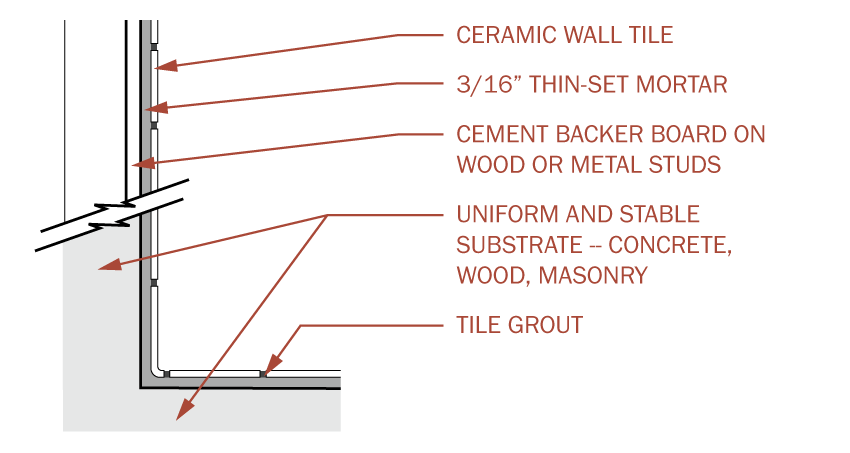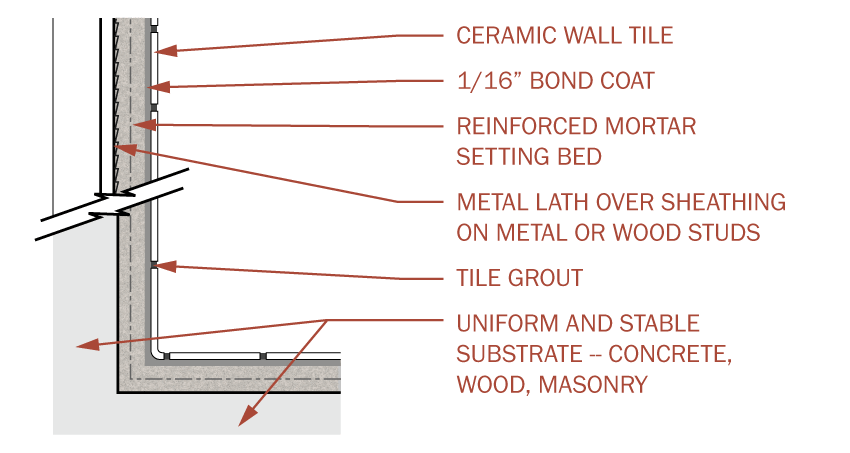Ceramic tile is a fired clay tile that can be used on floors, walls, and counter tops. Ceramic tiles can be glazed or unglazed and they come in a wide variety of shapes and sizes.
Thin-Set Ceramic Tile
A thin-set tile installation is one in which the tiles are adhered to a substrate with a 3/16" thick layer of mortar. The mortar can be a cement, latex, or epoxy mortar; also available is an organic adhesive. Thin-set tile installations are only acceptable for use on stable and uniform substrates since the thinness of the mortar hinders the ability to account for imperfections. Proper installation of the framing and substrate are critical to a quality tile installation.

In wet applications, thin-set ceramic tile should be applied over a cement backer board, which is more dimensionally stable than other substrates. The cement backer board is also resistant to mold; however, some installers prefer to add a layer of felt paper or other water-resistant membrane to prevent the framing from rotting in the rare event of water getting through the cement board.
Thick-Set or Mud-Set Ceramic Tile
A thick-set or mud-set tile installation consists of finish tiles set over a 1-1/4" to 2" thick portland cement mortar bed. The mortar bed sits over the sub-floor and provides a smooth and stable base for the tile installation. Suitable sub-floors for thick-set tile installations include concrete slabs and properly installed wood. In a floating mortar bed system, a cleavage membrane is installed over the sub-floor. This membrane allows the tile system to move independently of the sub-floor. Otherwise, the mortar bed is laid directly over the sub-floor to create a bonded mortar bed installation.

When the tiles are set while the mortar bed is still plastic, a thin layer of dry-set mortar or a thin layer of a portland cement mixture is used to adhere the tiles. This is called a bond coat. If the mortar bed has completely set, then the tiles are adhered with a bond coat of latex-portland cement.
For thick-set wall tile installations, a metal lath is installed over the wall surface (masonry, concrete, stud framing, gyspum wall board, etc). The metal lath allows the mortar bed to adhere to the wall surface.
There are a few advantages to using a thick-set mortar bed application. First, the mortar bed can be used to adjust uneven sub-floors and it also creates an ideal surface for tile adhesion. The thickness of the mortar bed allows the floors to be sloped; for instance, to slope a shower to a drain. The mortar bed can also conceal other items, such as tubes for heated floors or waterproof pans. An advantage specific to thick-set installations with a cleavage membrane is that cracks or defects in the sub-floor are not transferred to the mortar bed or finish tile layer.


